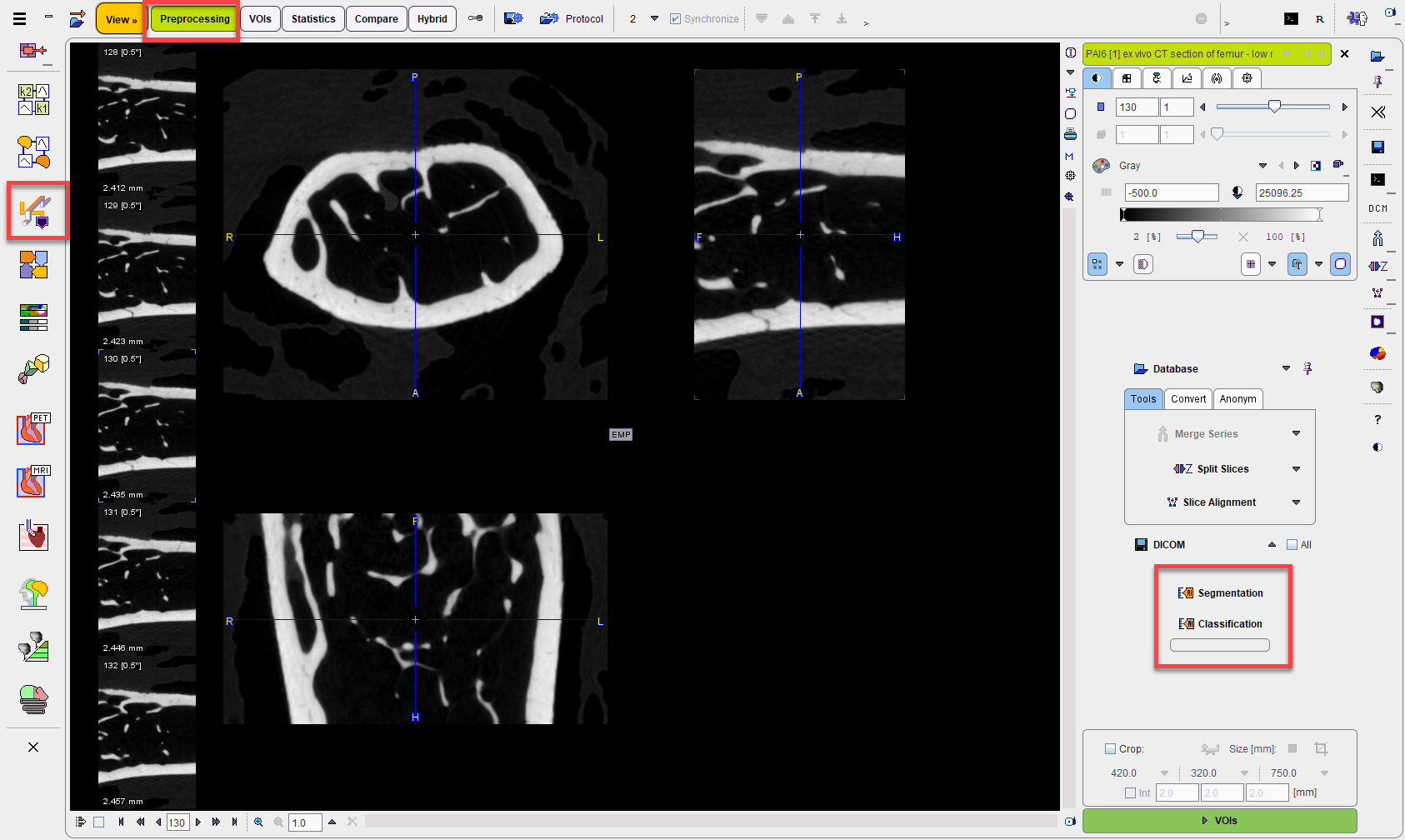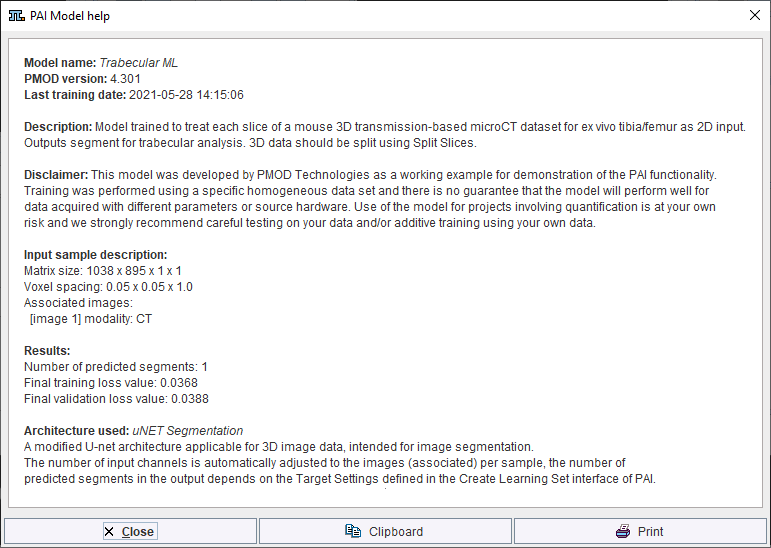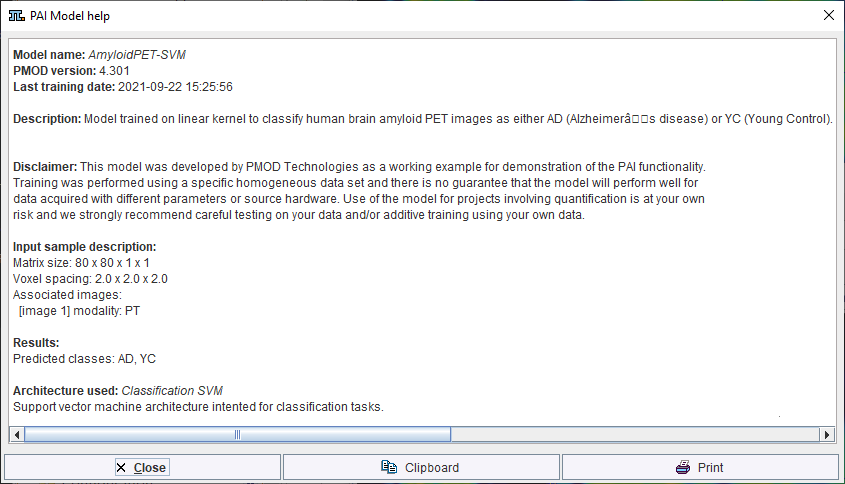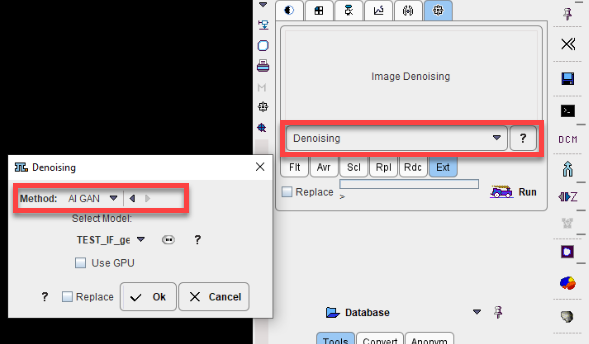A shortcut to the Segmentation interface with MACHINE LEARNING segmentation method is available on the View tab for the data currently loaded. Alternatively the Segmentation tool may be opened from the Image Processing Tools (for segment generation) or VOI Tools (for direct VOI generation without segment) and MACHINE LEARNING selected from the list of segmentation methods on the left:


Use of an available/compatible GPU may be toggled on/off using the Use GPU checkbox.
Following the selection of the MACHINE LEARNING segmentation method the trained model should be selected from the Select Model list. Trained models available in resources/pai are shown with naming according to the weights folder and architecture used.
Additionally, self-trained models saved in the database can be selected using the AI Learning Set browser:

Further information about the trained model selected is available in the model help:

Note that the available text shown is controlled by the user for self-trained models during creation of the Learning Set (and architecture Python files if applicable).
The dimensions of input data to a model for prediction must match the dimensions used for training of the model. When a model was trained using 2D data, 3D datasets will be automatically split into 2D and the resulting segments reassembled into 3D volumes. Likewise, data with multiple frames (such as dynamic PET data) will be split/reassembled according to how the model was trained.
A shortcut to AI-based classification is available on the View tab for the data currently loaded.

The model to be used must be selected from the menu.

Self-trained models may be selected using the AI Learning Set browser.
Additional information about the model is available using the PAI Model Help button.

Display of the R Console during classification is optional and is toggled using the Show R console checkbox.
The result of classification is shown in tabulated form below the Classification shortcut.

See the Case Study for Human Amyloid PET Classification for further information
AI-based image denoising is under development using Generative Adversarial Networks (GAN). This functionality will be available as an option in the Denoising image processing tool (e.g. View tool):

An alternative method using Non-local Means is also available in Denoising image processing tool.